Huge thanks to everyone who voted over the past several weeks for what the next Norebbo aircraft template should be! There were a ton of submissions, and the winner ultimately came down to: the 747SP. That was both exciting AND scary for me, since it’s become painfully clear that I’ve procrastinated on the 747 family of aircraft for far too long, and I needed to roll of my sleeves and get’r done.
However, instead of illustrating the SP like everyone voted for and being done with it, creating templates of the 747-100 first would make it a lot easier. And if I’m going to do the -100 (and the SP), I might as well build out the entire 747 series (beyond the -400, -400F, and -8 that I’ve already completed).
Anyway, my lengthy procrastination was based squarely on the fact that there were so many engine options available on the 747 over the years (for each variant). And let me tell you – trying to sort all that out is not what I enjoy doing. I like illustrating airplanes. I don’t like scouring the Internet trying to figure out what all the engine options were, and then trying to find decent reference material for each. It can be a real drag sometimes.
The huge sense of accomplishment I feel after completing a large series of aircraft is pretty nice though. Finishing the entire 737 series (Original Series, Classic Series, Next Gen Series, and MAX Series) this time last year was incredibly satisfying, and I guess I’m ready to do it again with the 747 – starting with the 747-100 – which was launched by Pan Am in 1970.
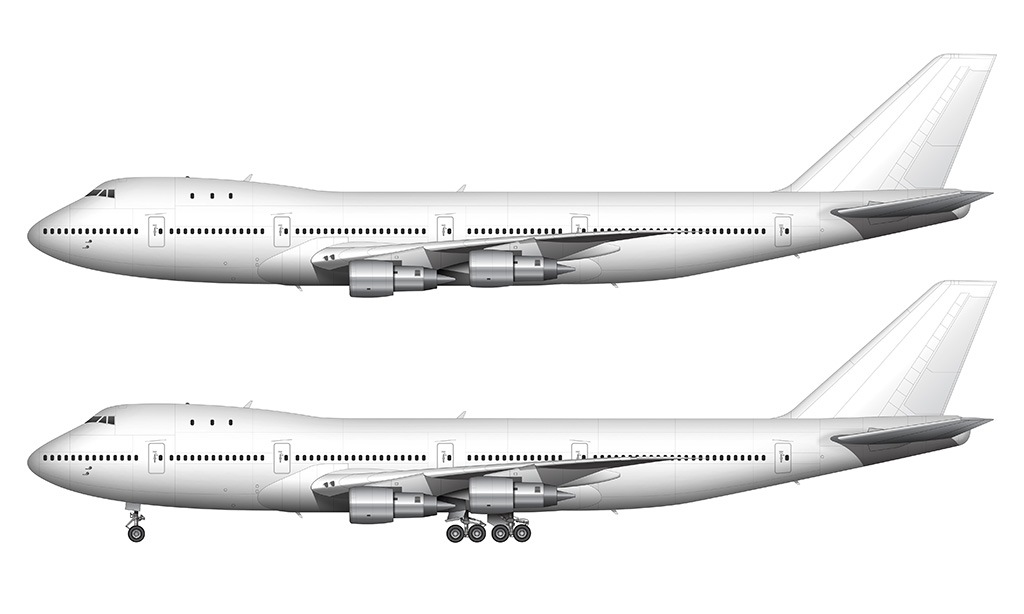
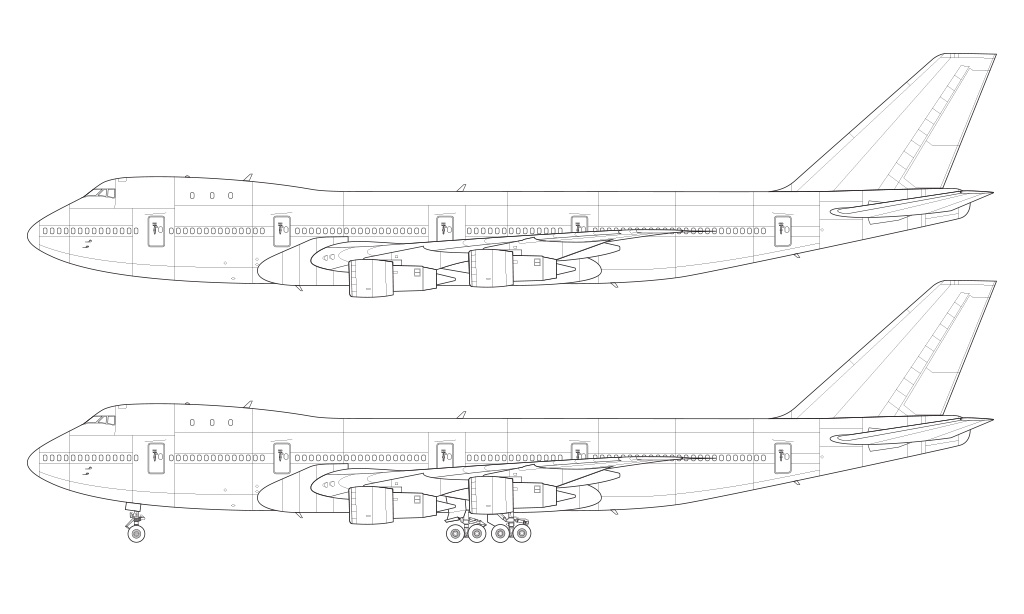

A brief history of the Boeing 747-100
Well, I’ve already told you that the 747-100 was launched by Pan Am in 1970 (January 22nd, actually – from New York to London). But did you know that many of the ideas (and technology) for the 747 came from a military transport aircraft concept conceived in 1963?
That concept was presented (and ultimately rejected) by the US Air Force, but Boeing was able to utilize many of the innovative features of that proposal when asked by Juan Trippe (president of Pan Am) to design and build an aircraft twice the size of the 707.
Air travel was exploding in the 1960s (sorry, bad pun), and airlines were in need of very large aircraft to deal with increased demand and limited slots at major airports. The 747 was the ultimate solution, as it could carry 500+ passengers. Not only that, since the original concept was designed for easy loading and unloading of containerized freight, the 747 became an ideal aircraft for all-cargo operations.
747-100 orders and deliveries
In total, there were 205 747-100’s built and delivered since 1970. Note that there are technically 3 different variants of the 747 (-100, -100B, and -100SR). There were 168 -100’s built (167 delivered), 9 -100B’s, and 29 -100SR’s.
40 airlines operated the 747-100 over the years, with Pan Am receiving the first production model built on December 13, 1969. Pan Am also received the last 747-100 ever built, which happened on July 2, 1976.
What are the visual differences between the 747-100, 747-100B, and 747-100SR?
At first glance, there aren’t many visual differences between the 747-100, 747-100B, and 747-100SR (note that “SR” stands for “Short Range”). All three aircraft feature the same wings, wing box, vertical stabilizer, and horizontal stabilizer. Landing gear is essentially the same (visually).
While the exterior dimensions are nearly identical for all three aircraft, the -100 was unique in that there were only six passenger windows on the upper deck (three on each side). The -100B and -100SR featured a lengthened upper deck to accommodate 20 windows (10 on each side).
As far as I know (someone please correct me if I’m wrong), there were three engine options. The -100 was only available with Pratt & Whitney engines, but the -100B was available with Pratt & Whitney and Rolls Royce. The -100SR was available with both Pratt & Whitney and General Electric engines. Each had their own visual appearance of course.
FYI, the engines featured on 747-100 templates above are Pratt & Whitney JT9D-3A’s.
Why didn’t I illustrate templates of the 747-100B?
If you follow me on twitter and Facebook, you probably saw my posts last week in which I proudly declared that I would be posting both the 747-100 and 747-100B this week (in the same post). However, further research revealed that the -100B was eventually renamed to be the 747-200.
And since I will be making a separate post about the -200 (next week), there’s no point in making things confusing by posting the -100B/-200 here. Which leads me directly to the topic of the next section…


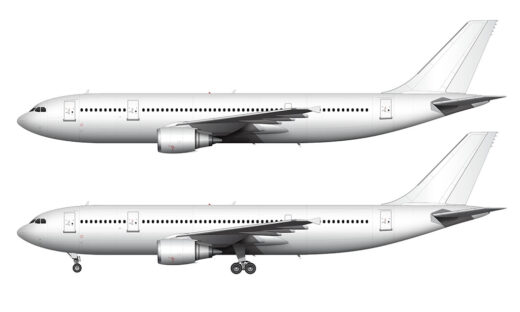
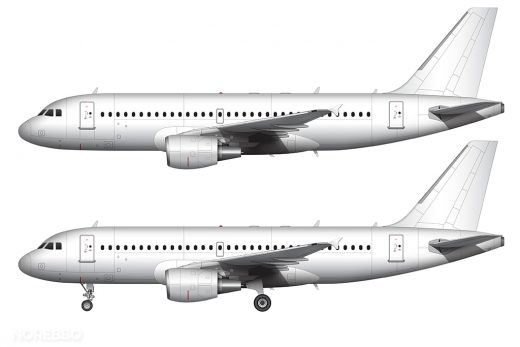
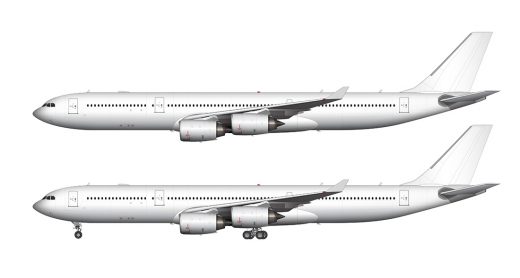
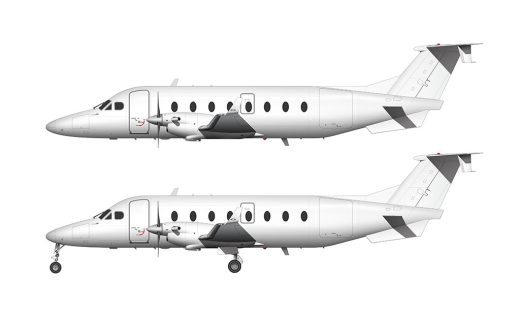
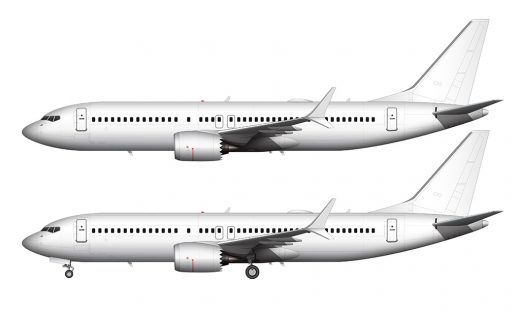
Hey, are you still working on the template for Boeing 737-800BCF? Sorry if I bothered you because well, i have asking the same thing since June…
It’s a lower priority at the moment, but it’s still on “the list”!
Thanks for this profile Scott – I love this fantastic aircraft. Those engines look scary puny compared to modern jets though
You’re welcome Martin – yeah, it’s amazing to to think about how far aircraft technology has come over the years. The 747-100, while very nice looking, must have been very challenging to fly compared to modern aircraft such as the A350 and 787.
Personally I like this original version’s appearance more than later variants, although when seen as profile only the front does look a bit banana shaped. Incidentally, you mention that the -100B and SR had a lengthened upper deck to accommodate more windows – I think the external dimensions were the same – right? It’s a bit confusing as there were later variants with a stretched upper deck ( a longer ‘hump’). There again, the stretched upper deck was retro-fitted to some -100SRs. … I think I’ve confused myself now.